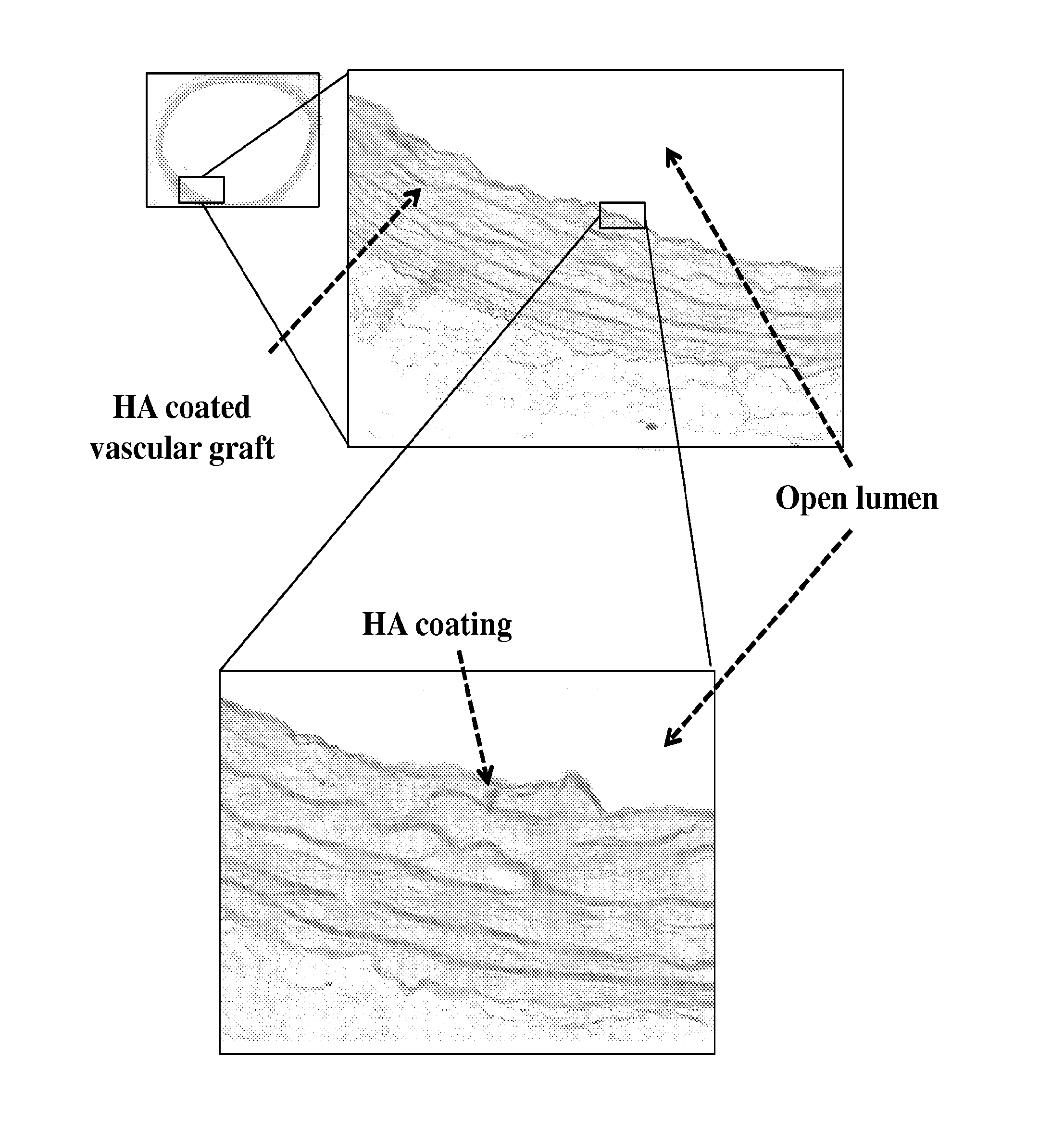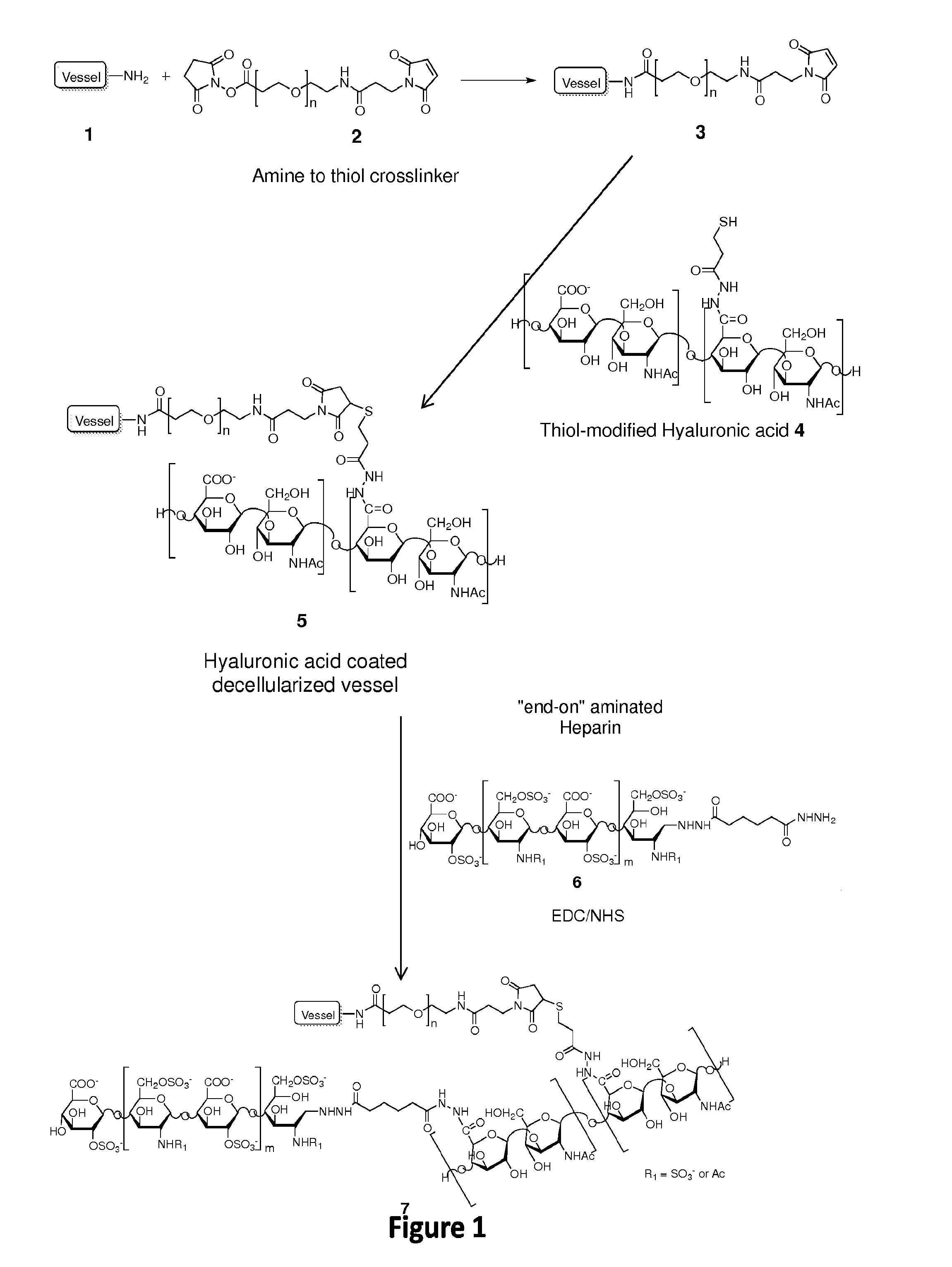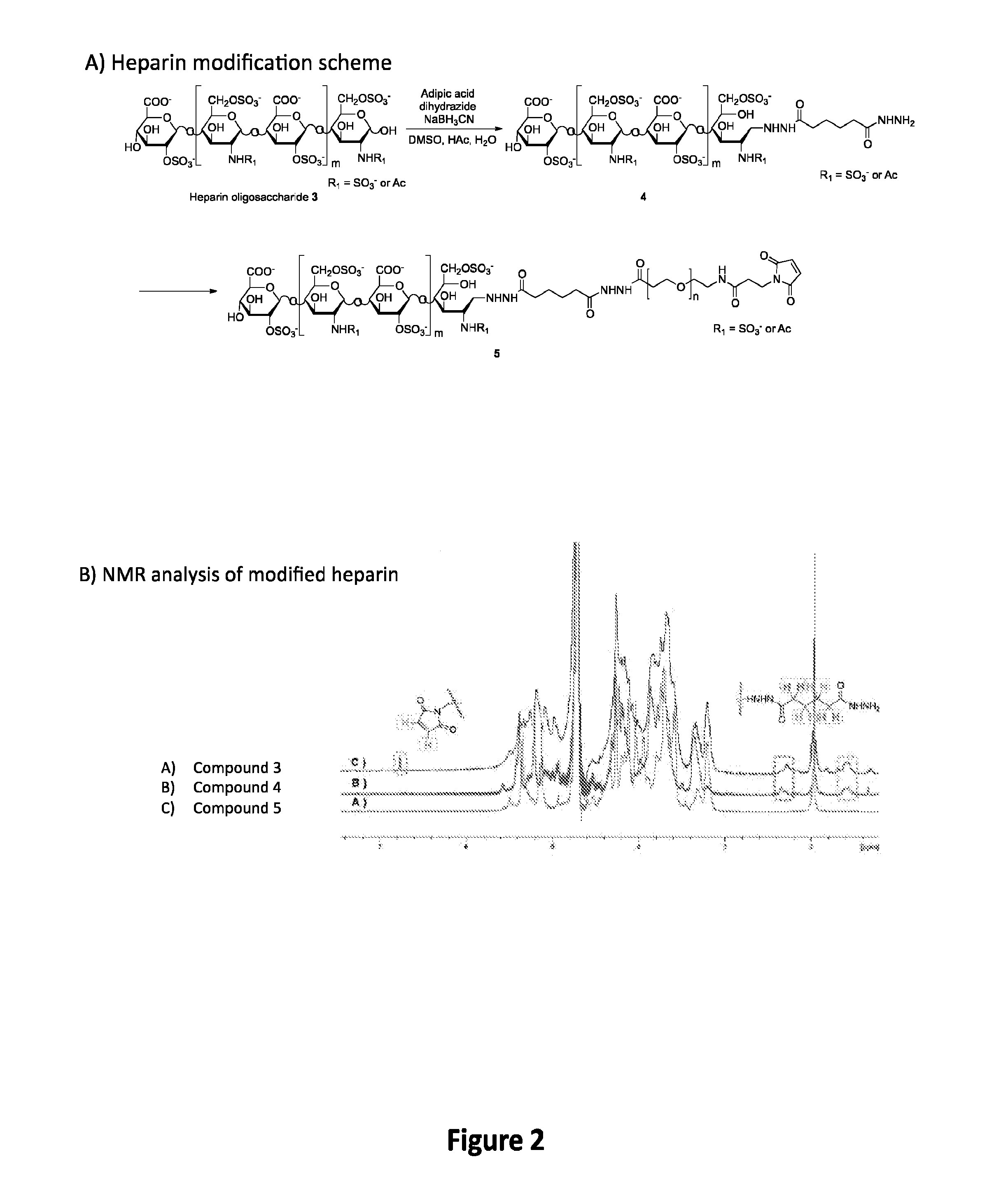Anti-thrombogenic grafts
a graft and anti-thrombosis technology, applied in the field of anti-thrombosis grafts, can solve the problems of high thrombosis and reduce the effect of thrombosis, and achieve the effect of inducing growth and/or differentiation
- Summary
- Abstract
- Description
- Claims
- Application Information
AI Technical Summary
Benefits of technology
Problems solved by technology
Method used
Image
Examples
experimental examples
[0141]The invention is further described in detail by reference to the following experimental examples. These examples are provided for purposes of illustration only, and are not intended to be limiting unless otherwise specified. Thus, the invention should in no way be construed as being limited to the following examples, but rather, should be construed to encompass any and all variations which become evident as a result of the teaching provided herein.
[0142]Without further description, it is believed that one of ordinary skill in the art can, using the preceding description and the following illustrative examples, make and utilize the present invention and practice the claimed methods. The following working examples therefore, specifically point out the preferred embodiments of the present invention, and are not to be construed as limiting in any way the remainder of the disclosure.
example 1
Hyaluronic Acid-Heparin Based Coatings for Biological Substrates
[0143]Described herein is the development of a coating for decellularized biological structures (native and tissue engineered) built from a first layer of thiol-modified hyaluronic acid (HA; also known as hyaluronan) and a second layer of modified heparin.
[0144]HA Coating
[0145]Thiol-modified HA (Glycosan, San Francisco, USA) was crosslinked onto decellularized biological structures amines groups (NH2) using the sulfhydryl (SH) groups on the HA. This was accomplished via heterobifunctional crosslinker made up of N-hydroxysuccinimide ester (NHS) and maleimide where NHS reacts with the amine groups on the decellularized vessels and maleimide reacted with the sulfhydryl groups on the hyaluronic acid. The crosslinked hyaluronic acid created a few microns thick continuous layer over the length of the tubular vessel, “hiding” the exposed collagen of decellularized vessels.
PUM
 Login to View More
Login to View More Abstract
Description
Claims
Application Information
 Login to View More
Login to View More - R&D
- Intellectual Property
- Life Sciences
- Materials
- Tech Scout
- Unparalleled Data Quality
- Higher Quality Content
- 60% Fewer Hallucinations
Browse by: Latest US Patents, China's latest patents, Technical Efficacy Thesaurus, Application Domain, Technology Topic, Popular Technical Reports.
© 2025 PatSnap. All rights reserved.Legal|Privacy policy|Modern Slavery Act Transparency Statement|Sitemap|About US| Contact US: help@patsnap.com



